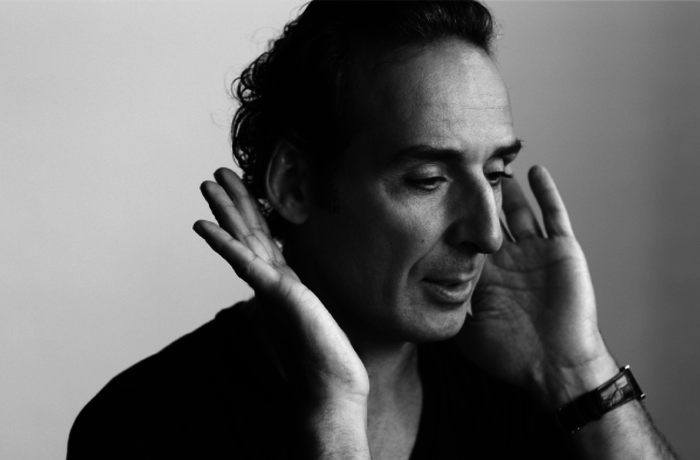The Sound of Movies: The Unforgettable Music of How to Train Your Dragon
Tavy Oursin discusses John Powell’s invaluable contribution to a childhood favourite, exploring the key role soundtrack plays in immersing us into fantasy worlds.
Normally, the film scores I listen to while I study improve my concentration and motivation, but recently, one track turned up on my playlist that brought my productivity to a standstill. I immediately recognised the bagpipes from this childhood favourite of mine and before I knew it, I was blissfully daydreaming of dragons flying around cloudy blue skies. The track was John Powell’s Test Drive from his 2010 How To Train Your Dragon score: the music that accompanies the scene where Hiccup and Toothless embark on their first flight.
The scene entails Toothless using his prosthetic fin for the first time, while we see the awkward protagonist, Hiccup, abandon his fears as they fly high above the sea. It is a pivotal moment in their unlikely friendship: a breath-taking trial-by-fire for their steadily growing mutual trust.
The scene is already exhilarating, aided by the beautiful Highland-esque landscape of fictional Berk, as Hiccup and Toothless make their adrenaline-pumping navigation of misty rock formations. However, it is Powell’s grand and rousing score that elevates the moment to greater heights.
Two sections in particular show the soundtrack at its best. The first, where Hiccup and Toothless initially set off, starts with striking bagpipes and intermittent bellows of brass that parallel Hiccup’s determination. Powell then escalates the anticipation by introducing wind instruments, evoking the indescribable freedom of flight. With the audience already intoxicated with emotion, Powell takes it up a notch once more. As the swelling and voluminous notes of the epic brass instruments take over, you truly feel as though you’re soaring with them through the skies. It is thrilling how we are able to live this normally unobtainable experience, as the combination of the music and the stunning visuals allow us to transcend the realms of our imagination and participate in the action.
We then hear violins when Hiccup looks up to see birds flying above them. The softer music reflects Hiccup’s brief moment of awe, the realisation that he is now like one of those birds, experiencing an aspect of his home that he’s never seen before. Powell ends this section with the flourish of all the instruments combined together to signal this joyful and victorious moment.
The second section is even more remarkable. As the pair dart through perilous rocks, the repeat of all the instruments crescendoing together becomes all the more glorious and moving with the intensified brass and exaggerated swooshing of air coming from Toothless’ wings. The key difference from earlier is that Hiccup has now overcome his worries - we are seeing him finally experience a liberation from the constraints of his home life on Berk. The score generates such powerful emotion here that, I am unashamed to say, it brings tears to my eyes.
The overall awe and majesty of the flight is all the more enhanced by Powell’s brilliant communication of the stirring sense of danger through his music, and this intertwined dynamic is what makes the whole scene so enduring. It transforms what would be an average action scene depicting the growth of a hero into a timeless and iconic one with a universally shared reaction, leaving a long-lasting impact on the audience.
These moments therefore demonstrate how crucial the role of music can be in building the response to a scene, and how greatly we underestimate its importance. John Powell has proven how the score can amplify everything, from the action to the landscape, as well as making a tremendous impression on the viewer. I think this is why I am so emotionally attached to the film, and this scene in particular - The sweeping score allows me to momentarily escape from any issues (such as my work) and sink into a nostalgic dream world where I too can heroically fly to the sound of bagpipes and trumpets.
 News / Cambridge academics stand out in King’s 2026 Honours List2 January 2026
News / Cambridge academics stand out in King’s 2026 Honours List2 January 2026 Interviews / You don’t need to peak at Cambridge, says Robin Harding31 December 2025
Interviews / You don’t need to peak at Cambridge, says Robin Harding31 December 2025 News / AstraZeneca sues for £32 million over faulty construction at Cambridge Campus31 December 2025
News / AstraZeneca sues for £32 million over faulty construction at Cambridge Campus31 December 2025 Comment / Plastic pubs: the problem with Cambridge alehouses 5 January 2026
Comment / Plastic pubs: the problem with Cambridge alehouses 5 January 2026 News / Cambridge businesses concerned infrastructure delays will hurt growth5 January 2026
News / Cambridge businesses concerned infrastructure delays will hurt growth5 January 2026









